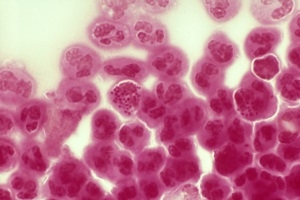The frequency of diseases of the genitourinary system is growing. However, very often pathology is detected at the stage of complications, because infections such as mycoplasma and chlamydia are often asymptomatic, but in case of chronicity they can have deplorable complications such as, for example, infertility.
The clinical picture of mycoplasmosis in women is non-specific, therefore, the appearance of discomfort or any changes in the genitourinary system requires diagnostics for such latent infections as mycoplasma and ureaplasma.
On estet-portal.com, read about the dangers of mycoplasma infection, as well as about effective methods of its treatment.
Clinical picture of the presence of mycoplasma in a woman
The clinical picture of mycoplasma infection is nonspecific, however, the most common complaints in mycoplasmosis are:
• presence of profuse mucous discharge;
• pain and bleeding during intercourse;
• burning and pain when urinating;
• swelling and redness of the genital mucosa.
Physically, regional lymph nodes may be enlarged due to the presence of an inflammatory process, and there may also be a feeling of discomfort during a bimanual gynecological examination.
What can be dangerous for mycoplasma in women
There are many conflicting data regarding the impact of mycoplasma infection on the course of pregnancy. Many women are carriers of this pathogen, and at the same time they calmly bear healthy children. However, some data indicate that the presence of mycoplasmosis in women increases the risk of placental insufficiency, and as a result of miscarriage.
The presence of mycoplasmosis can become a provoking factor of endometritis in the postpartum period.
Mycoplasmosis is often asymptomatic and has a high tendency to become chronic. As a result, with mycoplasma infection, chronic salpingitis and salpingo-oophoritis can occur, which very often lead to infertility.
Mycoplasmosis often causes infertility

How to Diagnose Mycoplasma in Women
Diagnosis of mycoplasma infection is based on clinical findings and laboratory findings. The most accurate diagnostic method – this is PCR, but today culture methods of research are also actively used.
To obtain reliable results, it is very important to correctly collect the material. In this case, the patient should not use antibiotics for at least 14 days.
In addition, such instrumental examination methods as colposcopy and ultrasound of the pelvic organs are recommended.
Modern problems of treatment of sexually transmitted infections according to WHO estimates
Features of effective therapy for mycoplasma infection
The main requirements for drugs for the treatment of mycoplasma infection – it is efficiency, low toxicity, safety and affordable price. To date, the good sensitivity of mycoplasma to antibiotics of the tetracycline series (doxycycline) and to macrolides (josamycin) remains.
A 10-day course of erythromycin, amoxicillin, or josamycin is recommended for the treatment of mycoplasmosis in pregnant women.
To prevent re-infection, the patient is advised to refrain from sexual intercourse during treatment, or use barrier methods of contraception.
No antibiotic resistance: modern principles of mycoplasmosis treatment
For more interesting articles, visit Facebook!







Add a comment